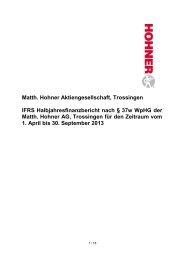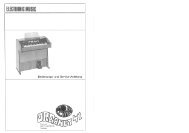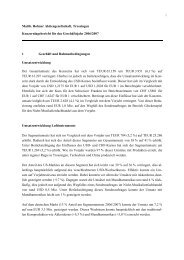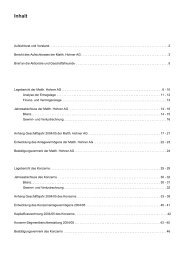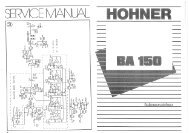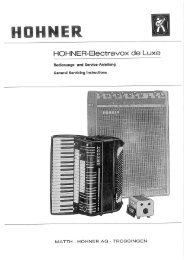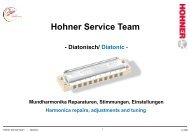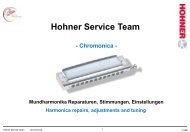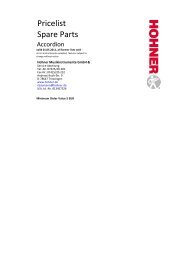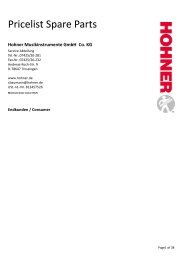Matth. Hohner AG
Matth. Hohner AG
Matth. Hohner AG
You also want an ePaper? Increase the reach of your titles
YUMPU automatically turns print PDFs into web optimized ePapers that Google loves.
Notes to the Consolidated Financial Statements for Business Year 2010/2011<br />
Foreign currency translation<br />
The functional currency concept is applied to translate the financial statements in foreign currency by the<br />
subsidiaries included in the consolidated Group. The functional currency is the local currency for all entities,<br />
since all foreign entities operate independently. Foreign currency transactions are initially translated at the<br />
spot rate applicable between the functional currency and the foreign currency on the date of the transaction.<br />
As of the balance sheet date, the assets and liabilities of the foreign subsidiaries are translated into the<br />
presentation currency of <strong>Matth</strong>. <strong>Hohner</strong> Aktiengesellschaft (Euro) using the closing rate. Income and expenses<br />
are translated at the weighted average exchange rate in the business year. The resulting translation differences<br />
are recognized separately in equity.<br />
The following exchange rates were decisive for currency translation in the Group:<br />
March<br />
31, 2011<br />
Closing rate Average rate<br />
March<br />
31, 2010<br />
2010/2011 2009/2010<br />
USD 1.4207 1.3479 1.3225 1.4137<br />
CHF 1.3005 1.4276 1.3381 1.5015<br />
CNY 8.8220 9.8350 8.9712 9.5174<br />
Intangible assets<br />
By initial recognition, intangible assets which were separately bought are measured at acquisition or<br />
manufacturing cost. The subsequent measurement of intangible assets is depend on the estimations if a<br />
limited or unlimited economic life time is existing. After initial recognition, intangible assets are carried at<br />
cost less any accumulated amortization and any accumulated impairment losses. The period and the method<br />
of amortization will be examined for an intangible asset with a limited economic lifetime at least by the<br />
end of each business year. If the expected economic lifetime of the intangible asset or the expected asset’s<br />
amortization of the intangible asset has been changed, another amortization period or another amortization<br />
method will be chosen. Such changes will be handling like changes of estimation. The ordinary useful life of<br />
the intangible assets that can only be used for a limited period of time is between 3 and 20 years.<br />
Goodwill is subject to an impairment test, if there is evidence that the intangible assets could be impaired.<br />
Goodwill and assets with unlimited lifetime are not ordinary amortized; however an impairment test is<br />
conducted one time of a year.<br />
Profits and losses of the asset sales are recorded to other operating income or other operating expenses.<br />
Research and development costs<br />
Research expenses are recognized as an expense in the period in which they are incurred. An intangible asset<br />
resulting from development during the course of an individual project is only recognized if the Group can<br />
provide evidence of the technical feasibility of completing the intangible asset so that it will be available for<br />
internal use or sale, and the intention to complete the intangible asset and to use or sell it.<br />
In addition, the Group must substantiate the creation of a future economic benefit by the asset, the<br />
availability of resources to complete the asset and the ability to determine reliably the expenses allocable to<br />
the intangible asset during its development. As these criteria are not satisfied, the development costs are<br />
recognized in the period in which they are incurred.<br />
Notes to the CoNsolidated FiNaNCial statemeNts Notes to the CoNsolidated FiNaNCial statemeNts<br />
71



